There is a long-held belief, an “old wives' tale” of sorts, that says that you cannot eat rhubarb after it has gotten hit by frost. But is it true?
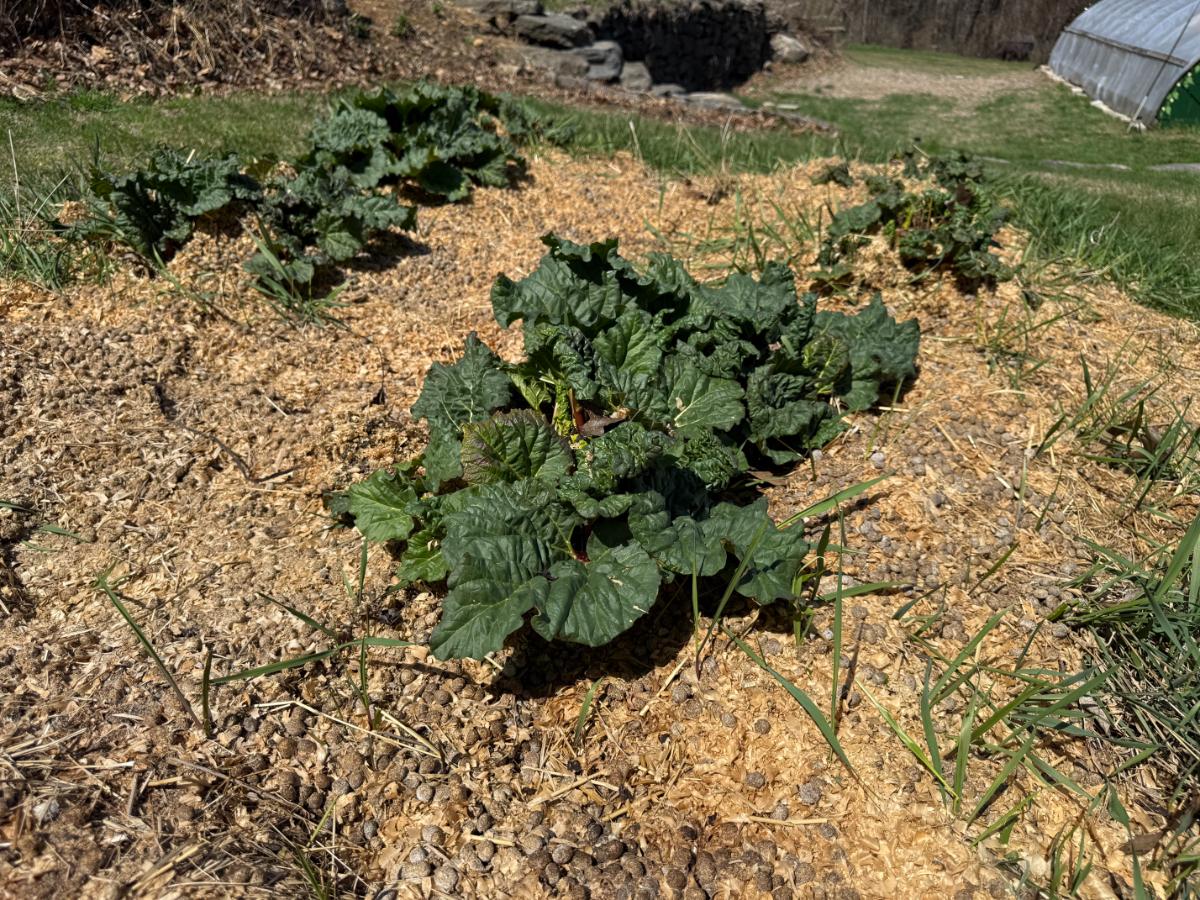
Is rhubarb safe to eat if it gets frosted in the spring?
Jump to:
- On Rhubarb and Spring Frosts
- Why is it Said That You Can’t Eat Frosted Rhubarb?
- Can Rhubarb Be Eaten if a Late Spring Frost Hits It?
- What if Rhubarb Experiences a Damaging Hard Frost? Is the Harvest Lost?
- Does Rhubarb Need Frost Protection or Covering?
- What About Frosts in the Fall?
- If In Doubt, Don’t Eat Cold Damaged Rhubarb
On Rhubarb and Spring Frosts
Rhubarb is one of the earliest plants to wake up in the spring. It needs cold temperatures in order to break dormancy and start to regrow each year. This means it needs winters where the temperatures fall below 40 degrees Fahrenheit (4.44 °C) for at least three weeks of the winter.
Rhubarb begins to sprout and grow from the crown when the spring soil temperatures start to rise, typically to between 40 and 50°F (4.44 to 10°C).
Obviously, these are not very high temperatures and they are lower than what most other plants -- even a lot of edible perennial plants -- will grow in.
With temperatures this low during its growing period, it is highly likely -- almost inevitable -- that young rhubarb will experience a frost during the early spring growing period (and depending on where you live, possibly even into the late spring).
So, it’s important to know if you can eat rhubarb that gets frosted.
Why is it Said That You Can’t Eat Frosted Rhubarb?
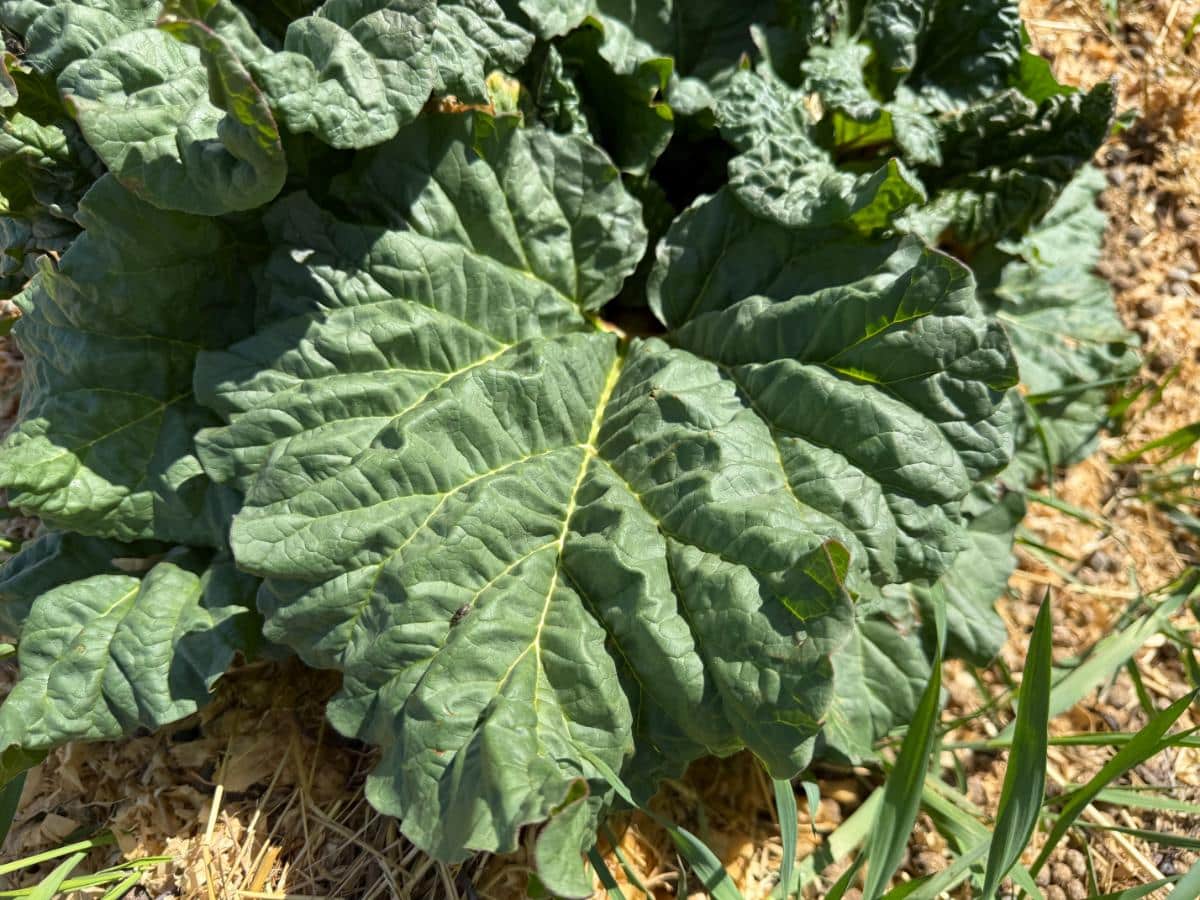
The line of thinking behind whether or not you can eat rhubarb after it has been frosted has to do with the toxicity of the leaves.
Rhubarb leaves contain oxalic acid, and it is true that oxalic acid is toxic in large quantities. That is why you should never eat rhubarb leaves.
Rhubarb leaves should be removed from the stalks and then composted. (Yes, it is safe to compost rhubarb leaves.)
The issue with frosts and rhubarb leaves is that severe cold damage can cause oxalic acid crystals to be drawn down into the plant stalk, which is the edible portion of the rhubarb plant.
Can Rhubarb Be Eaten if a Late Spring Frost Hits It?
That must mean that rhubarb is not safe to eat after a frost, right?
Wrong!
As several expert and university sources will tell you, it is safe to eat rhubarb even if it gets hit by frost, if the damage is not severe enough to cause texture and quality issues to the stalks.
The damage has to be bad enough to ruin the stalk. When that happens, the stalk is not in a condition that you would want to harvest it and eat it anyway.
Rhubarb is a hardy plant and it tolerates frost well. It is possible for leaves and stalks to be damaged by very cold temperatures or hard freezes. (This is what sends them into dormancy in the fall.) However, that is a level of cold that is deeper and colder than your typical frost temperatures.
In order for rhubarb stalks to be rendered inedible by cold, it would have to be a hard freeze of below 25°F for two or more hours (-3.89 °C).
The temperatures of an average frost (from 28 to 32°F or -2.22 to 0 °C) are simply not cold enough to harm rhubarb. They will not cause the plant to draw the oxalic acid into the stalks.
An easy way to tell if you can eat frosted rhubarb
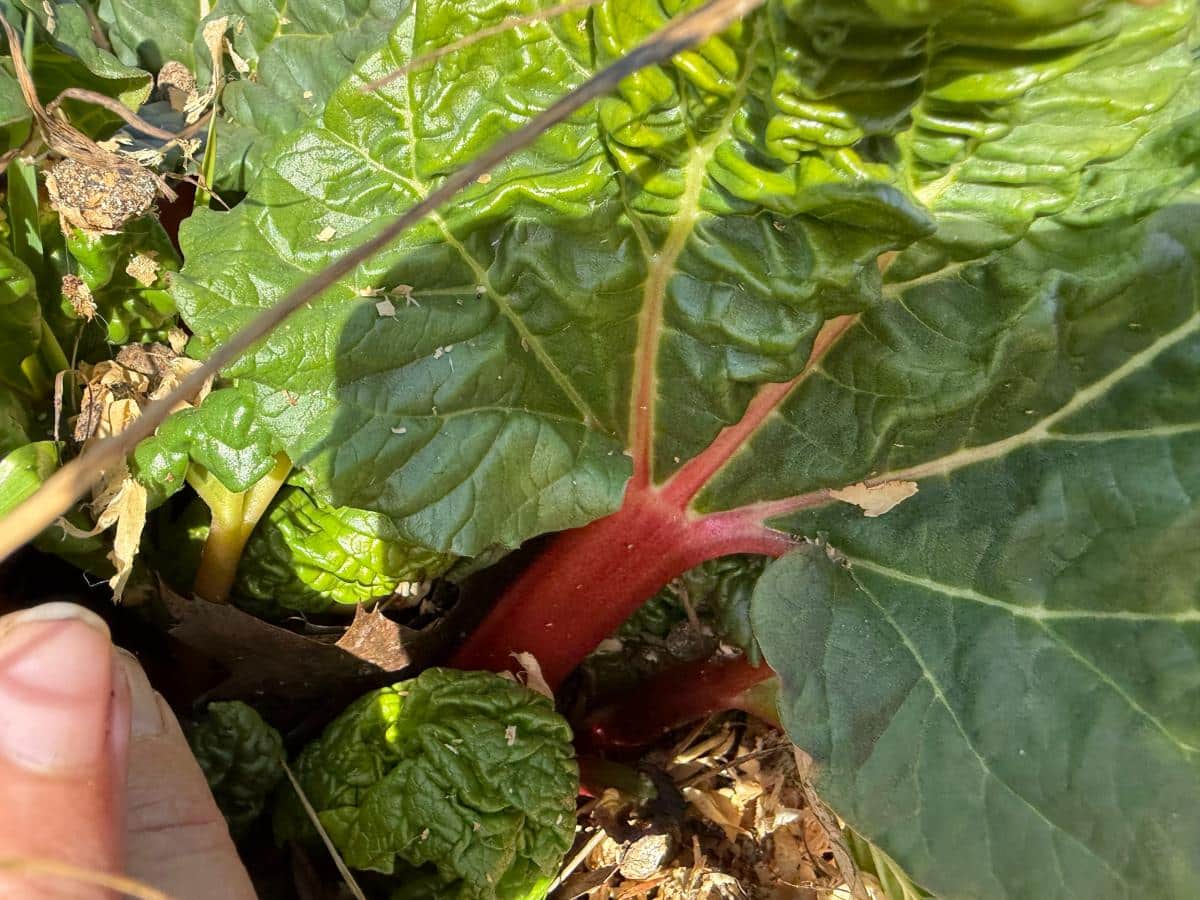
To tell if your rhubarb has been hit by a freeze, one that is hard enough to make the stalks inedible, look for signs of killing damage or death of the leaves, and look at the condition of the stalks themselves.
Signs of freeze damage to rhubarb leaves (which causes drawdown of the toxic oxalic acid into the stalks) are:
- Drooping, wilted leaves that are dying
- Dark brown or black damage along the edges of the leaves (even if they are still upright and firm)
The stalks are safe to eat if they are firm and standing upright. Do not eat the stalks if
- Rhubarb stalks are mushy
- Stalks are soft and bending
- Stalks have fallen over onto the ground (from mushiness or an inability to stand upright)
If the stalks themselves are in good, normal harvest condition, they are still safe to eat.
What if Rhubarb Experiences a Damaging Hard Frost? Is the Harvest Lost?
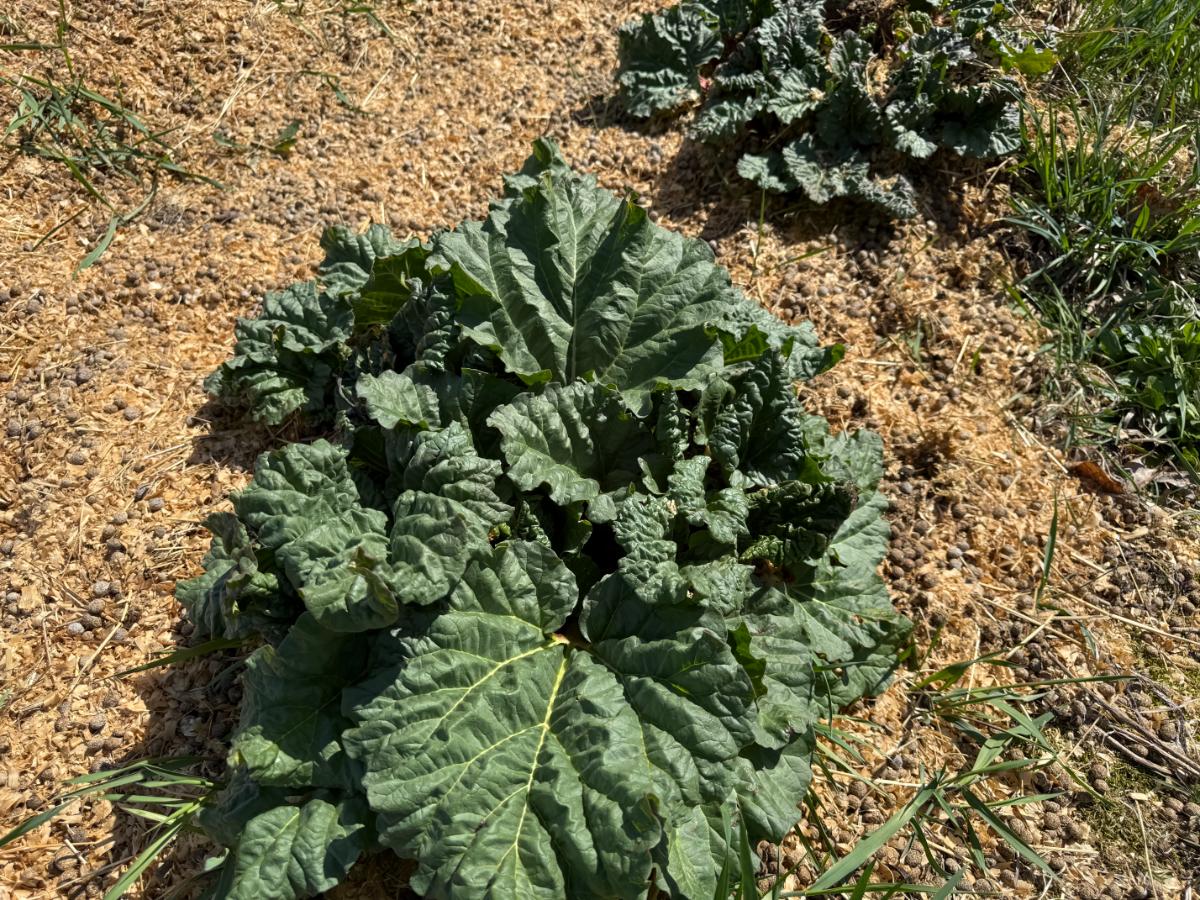
If your rhubarb experiences a hard freeze in the spring and it damages the stalks to a point where they are inedible, the harvest is not lost.
The only unsafe stalks would be those that are grown and damaged. The plant will continue to push up new stalks, and those will be safe to eat as long as they do not experience a hard freeze (but those hard freezes have to stop some time, and it’s not likely that you will get many hard freezes after rhubarb has started to grow).
New, fresh stalks will be safe to eat. Simply pull and discard those that were hard frozen, and let the plant regrow and renew with a fresh crop. As you are coming into spring, the plant will be in a growing phase, so there will be plenty of time left to get a rhubarb harvest.
Does Rhubarb Need Frost Protection or Covering?
While you could cover and protect your rhubarb if you know a frost is coming, it’s not usually worth the time and effort.
A typical frost will not damage your rhubarb plant, anyway. Only a hard freeze would be enough to cause enough damage to make it so you couldn’t eat the stalks, and a frost cover won’t usually be enough to protect any plant through a serious hard freeze.
And, as mentioned, the plant will rebound and regrow, and time and warmer temperatures will give you rhubarb to pick and eat again.
What About Frosts in the Fall?
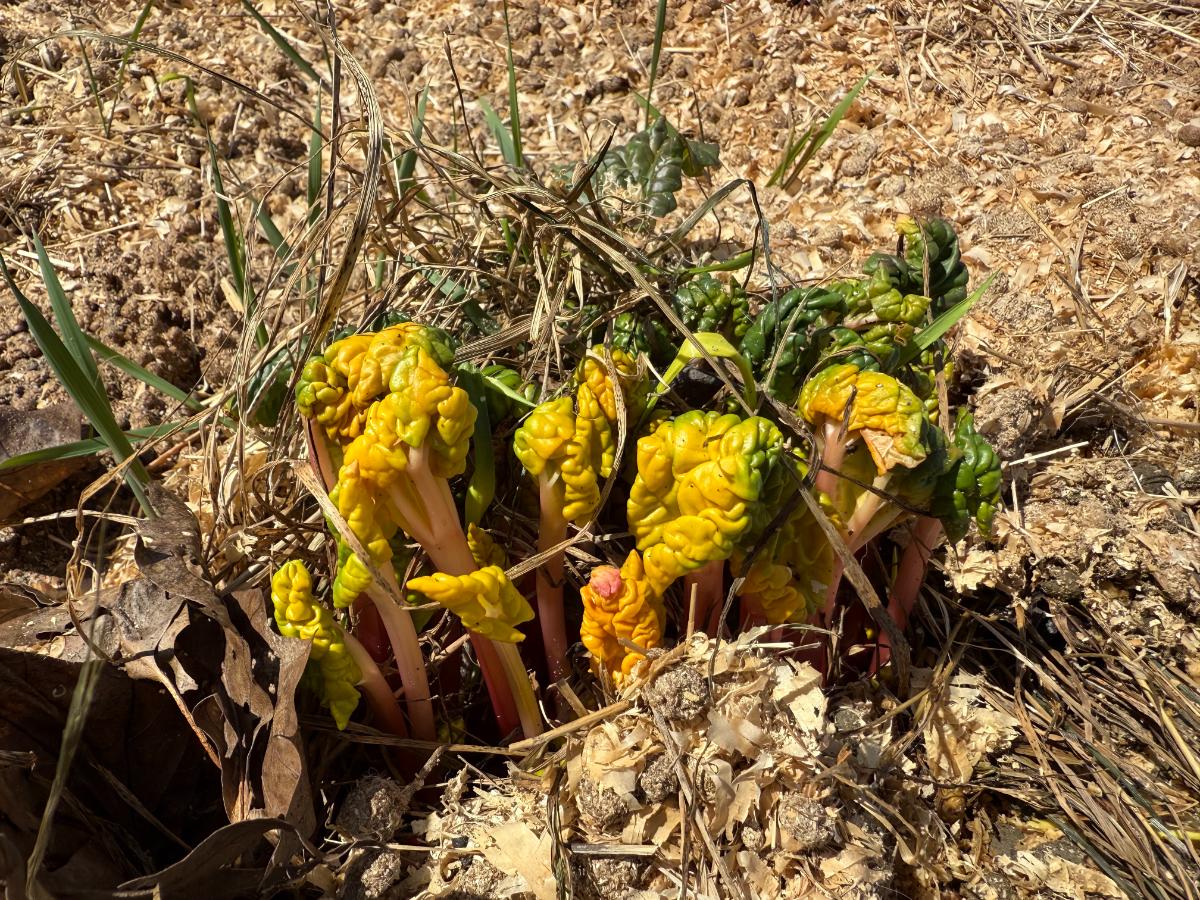
The same basic rules apply to rhubarb that is frosted in the fall. Typically, by fall we are not harvesting much from our rhubarb plants anway, because we usually slow or stop harvesting after late summer. This is to leave the plant with enough leaves and energy to feed the crown for the next year.
That said, you can continue to take some small, light harvests from rhubarb even throughout the summer and fall.
Just like hard-frozen spring rhubarb, you should not eat stalks that have been severely damaged by fall cold. Do not eat the stalks if the leaves are blackening or if the stalks are mushy, limp, and cannot stand upright on their own.
The biggest difference between spring frosted rhubarb and fall frosted rhubarb is that after a hard fall freeze, the plant will not rebound and regrow. This is the time of year the plant is going into dormancy, and that will be its signal. Once a hard freeze hits rhubarb in the fall, all harvesting should stop until the next year.
If In Doubt, Don’t Eat Cold Damaged Rhubarb
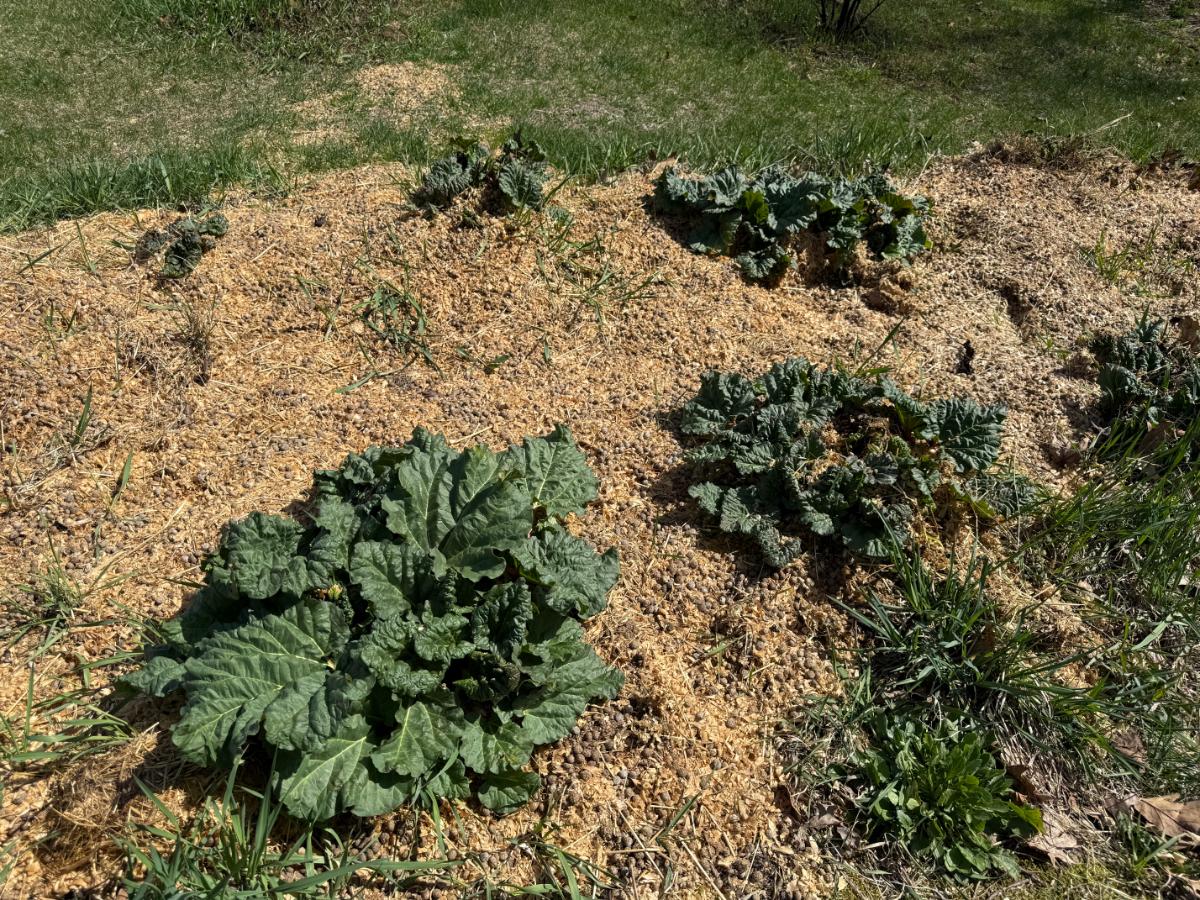
If you’re just not sure whether the rhubarb stalks are in good enough condition to eat, it’s best to discard them (whether it’s spring or fall). Compost the damaged stalks, and if it’s spring, patiently wait for new stalks to grow. They’ll begin to grow quicker as spring temperatures warm. Your patience and care will pay off.
Looking for more rhubarb information or some unique recipes for your “pie plant”?
Check out these articles:

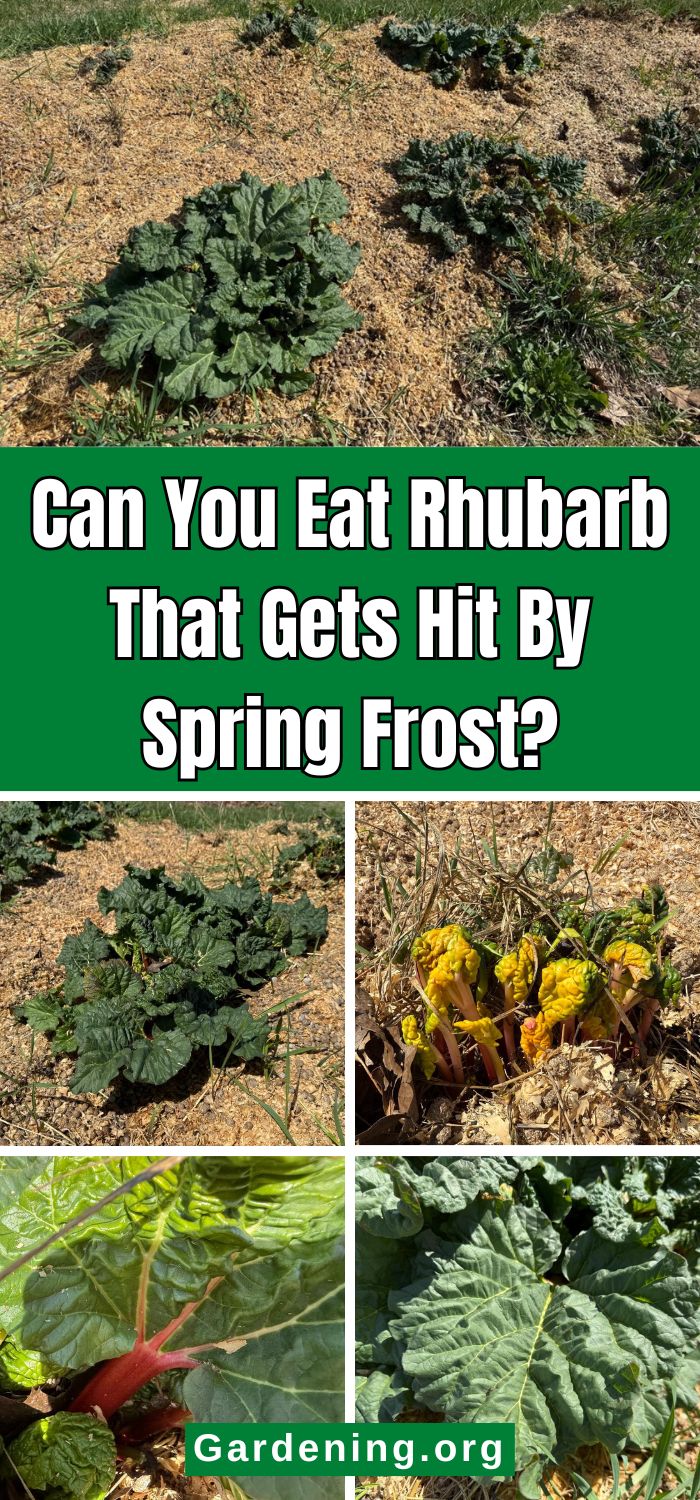
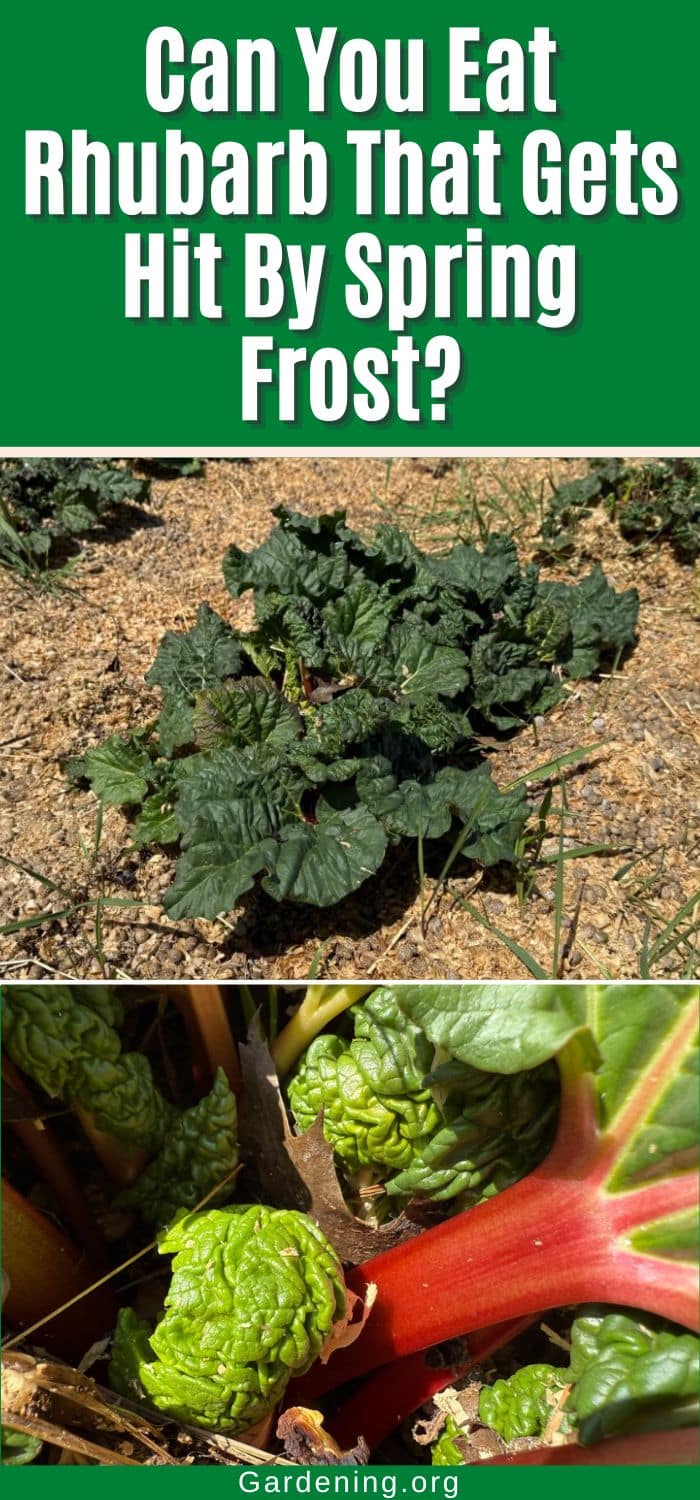
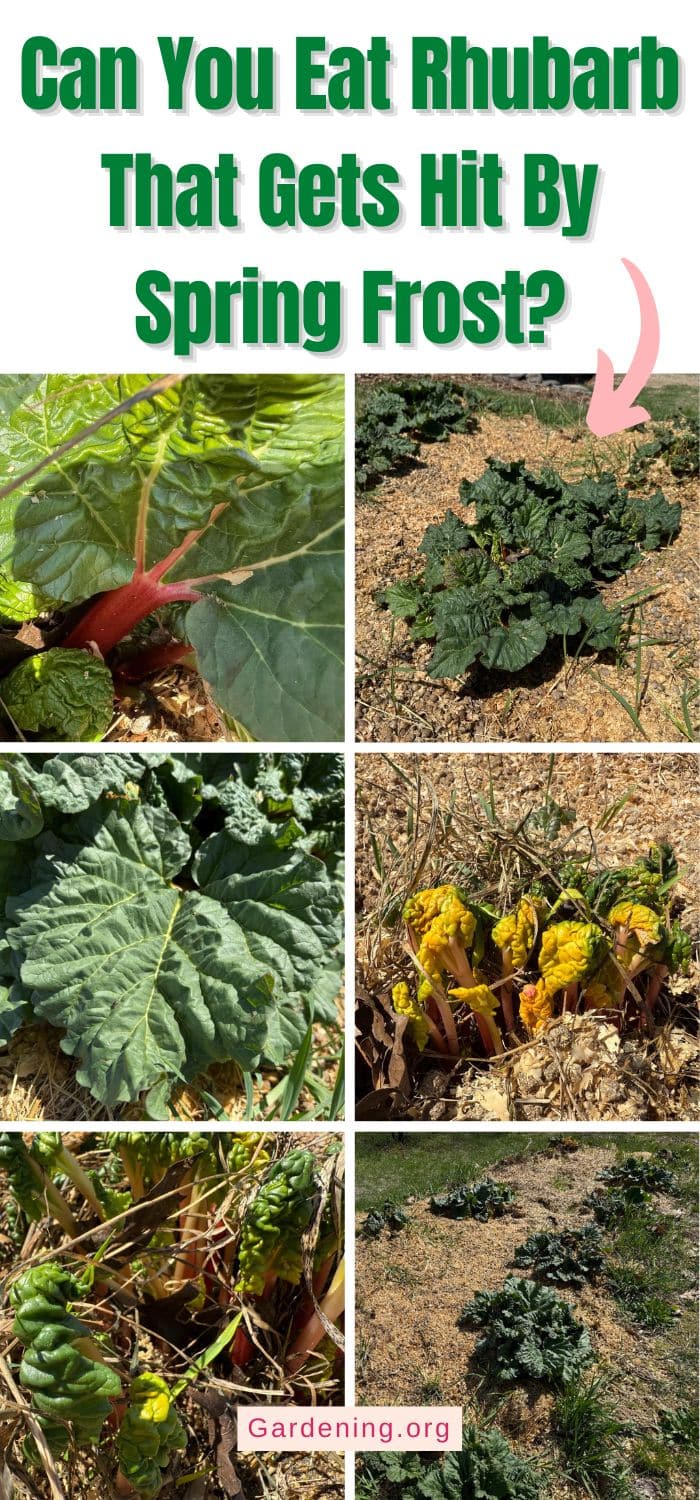
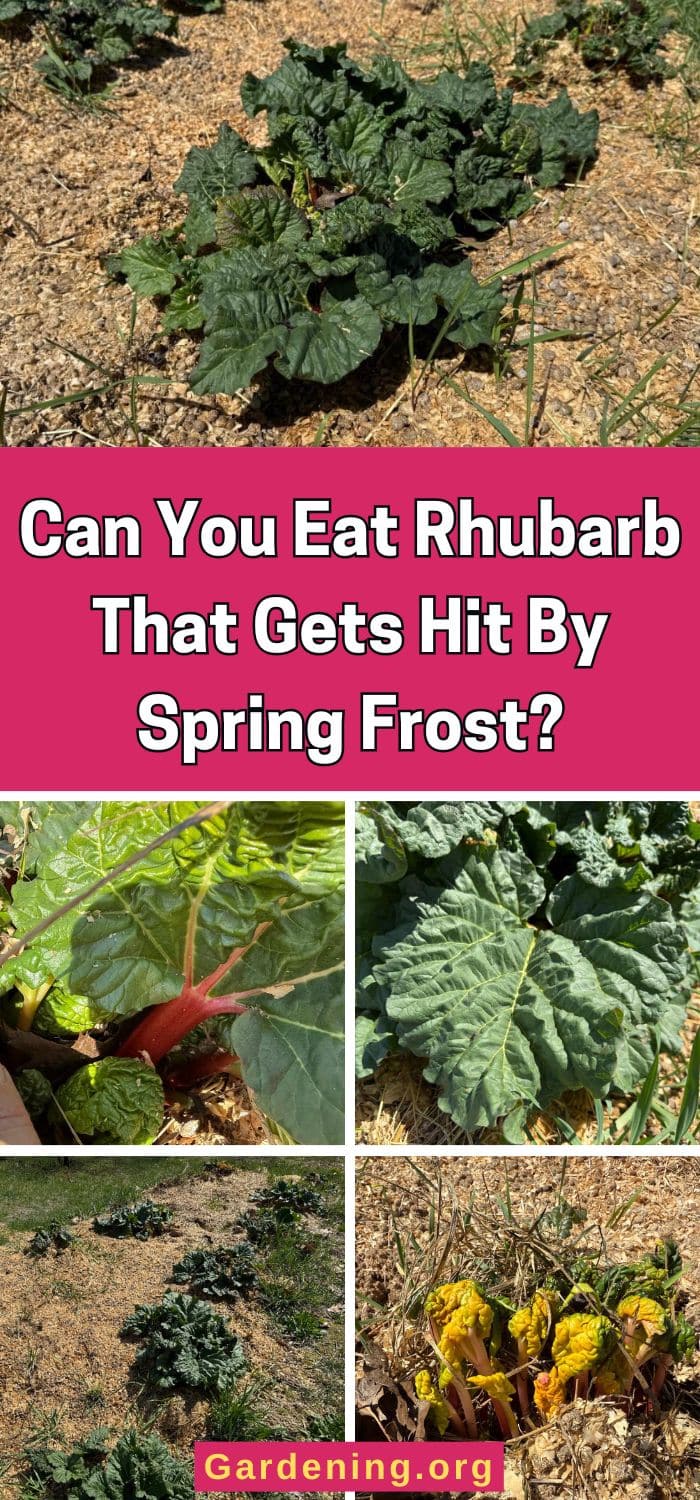
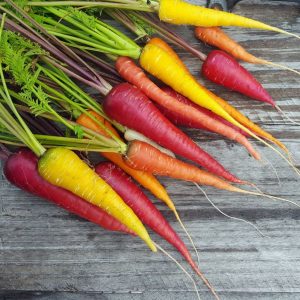
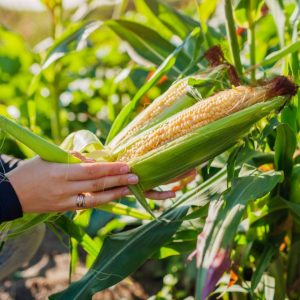
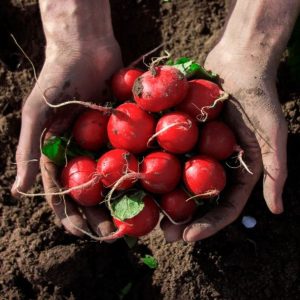
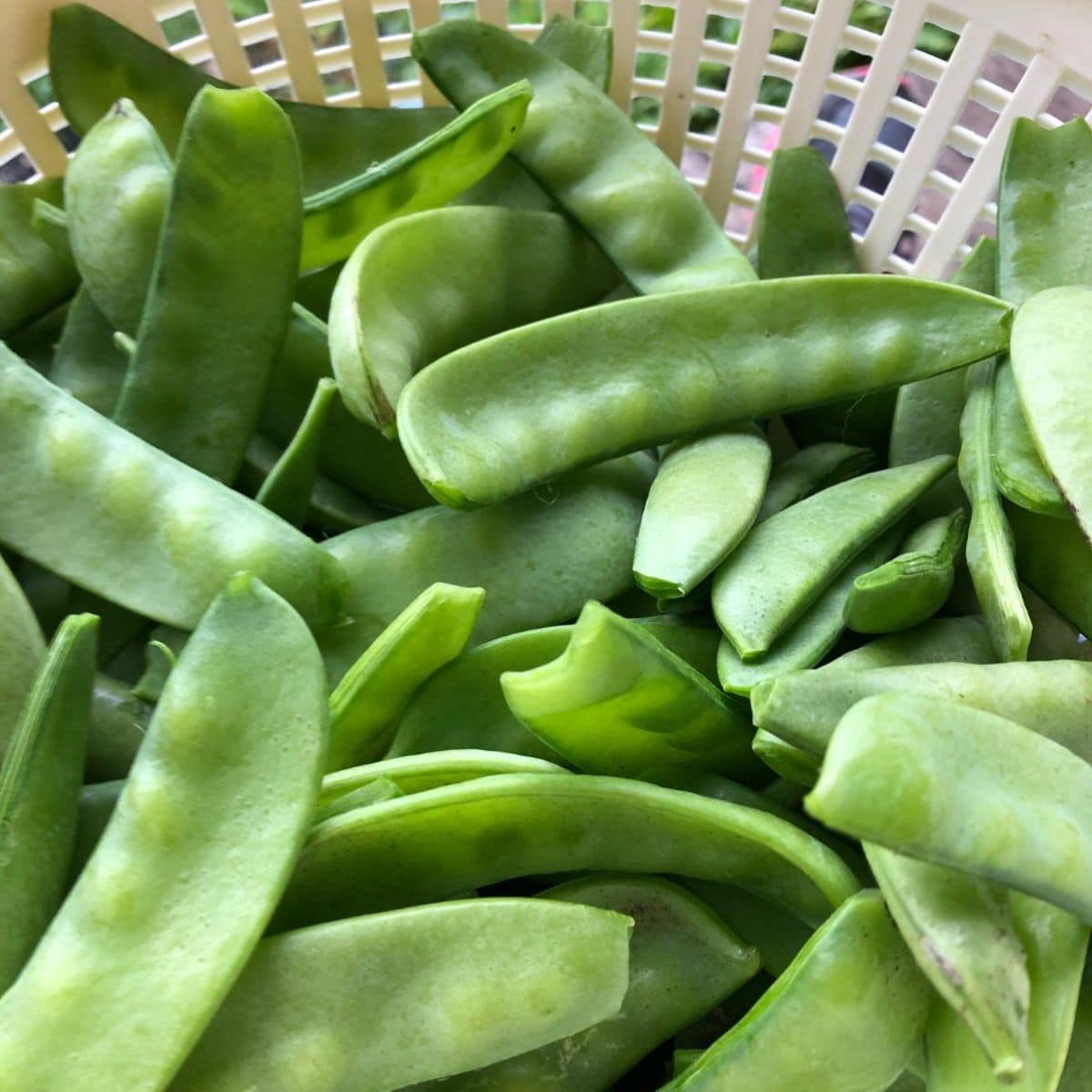
Leave a Reply